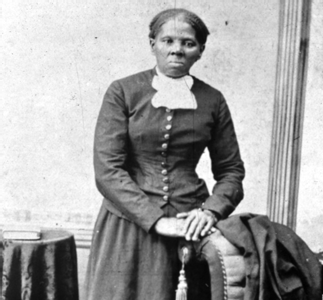A section of Wyman Park Dell in Baltimore, which was once named after two Confederate generals, will now be known as Harriet Tubman Grove. The ceremony marked the 105th year since the death of the famed abolitionist and Underground Railroad conductor.
“This [the renaming of the park] helps bring the community values to important places and helps to weave together the community,” said Baltimore Councilwoman Mary Pat Clarke. “This place is really interesting. Since the statues were removed, it has become a gathering place.”
For years, statues of Confederate Generals Robert E. Lee and Thomas “Stonewall” Jackson stood over the park, and since taking office in 2016, Mayor Catherine Pugh had vowed to have those and other tributes to the confederacy removed.
Last year, the city removed a total of four Confederate monuments from Wyman Park Dell after violence erupted in Charlottesville, Virginia. That incident, in which white nationalists protested the removal of Confederate monuments there, led several municipalities to either remove or consider removing such odes to the Confederacy.
Not only where the statues of Lee and Jackson removed, but also a monument dedicated to Confederate women, and a monument to Roger B. Taney, the Supreme Court justice who wrote the controversial opinion in the Dred Scott case.
“I felt the best way to remove the monuments was to remove them overnight,” Pugh said at the time. “I thought that there’s enough grandstanding, enough speeches being made, get it done.”
Born Araminta Ross in 1822 on Maryland’s Eastern shore in Dorchester County, Harriet Tubman’s parents had nine children.
As a child, Tubman did not have the opportunity to spend time with her family because she was separated from her father when her slaveholder, Edward Brodess, moved only Tubman, her mother and siblings to his farm in Bucktown, according to her biography posted on the National Parks Service website.
Three of her older sisters were also sold into slavery in the Deep South and by age six, she was separated from her mother when she was rented out and forced to work for other masters to care for their children, and catch and trap muskrats in the Blackwater River.
Tubman remembered the emotional pain being separated from her family, which she never wanted to experience again.
In March of 1849, Brodess died and Tubman knew for Brodess’s wife to pay her husband’s debts, she needed to sell some of her slaves. Determined not to be sold she escaped in 1849 and found freedom in Philadelphia.
Between 1850 and 1860, Tubman returned to the Eastern Shore of Maryland 13 times and freed more than 70 people, who were her family and friends so they could all be free together as a family. Her work as a liberator continued even into the Civil War. Ultimately, she helped to free hundreds more slaves.
Friends of Wyman Park Dell, a nonprofit organization that supports the park, wrote a letter to the City Council in October welcoming the renaming of the section of the park, according to CNN.
“This dedication of a grove of trees seems a fitting honor for a great abolitionist and U.S. Army spy who traveled countless miles through Maryland forests,” wrote C. Ryan Patterson, the president of the group’s board of directors.
The proposal also “provides the city an opportunity to correct a historic injustice for a Maryland native. Our city has not yet properly recognized Harriet Tubman, who died in poverty,” Patterson wrote.
On Saturday, March 10, 2018, Ernestine Jones-Williams, a Baltimore County resident and descendant of Tubman, spoke to those gathered for the dedication ceremony.
“We stand on the shoulders of this great woman,” Jones-Williams said. “We are overwhelmed. Thank you. God bless you.”
